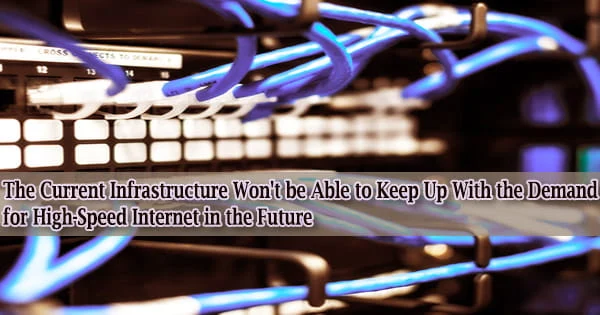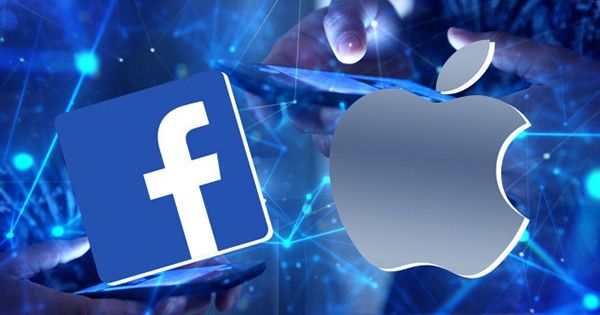According to research, copper network cables in the UK can sustain greater internet speeds, but only to a certain extent. If the government is serious about its goal to ensuring that everyone has access to high-speed internet, they claim that urgently more investment is required.
The highest data transmission speed possible over the existing copper wires has been determined by experts from the University of Cambridge and BT. In comparison to the speeds currently possible with ordinary infrastructure, this limit would enable quicker internet, but it won’t be able to sustain high-speed internet in the long run.
A website or web application that measures a user’s internet connection speed is called an internet speed test. By sending a small file from the server and timing how long it takes to download, process, and then upload the file back to the server, an internet speed test analyzes the broadband connection’s parameters.
The team discovered that higher frequencies, which permit larger data rates, cannot be supported by the “twisted pair” copper cables that are physically present in every home and company in the UK.
While just about one in four homes in the UK today have access to full-fibre internet, it will likely be at least two decades before every home has access to it. But existing infrastructure may be enhanced to temporarily enable high-speed internet in the interim.
The findings, which were published in the journal Nature Communications, highlight the necessity of making urgent investments in emerging technologies while also placing a physical restriction on the widely used copper lines in the UK.
By sending an Internet Control Message Protocol (ICMP) echo request packet to the host, certain speed test hosts can also measure ping, which is the amount of time it takes a message to travel back and forth from the sender to its destination.
The top speed tests allow users to test internet speed to various regions because they have numerous host servers spread out over the world. In order to ensure that the speed test results accurately represent the user’s actual working speed, it is best to choose a server that is close to the server of the website or web application being used.
High-speed internet is a necessity of 21st-century life. Internet service providers have been switching existing copper wires to high-speed fiber-optic cables, but it will take between 15 and 20 years for these to reach every house in the UK and will cost billions of pounds. While this change is happening, we’ve shown that existing copper infrastructure can support higher speeds as an intermediate solution.
Dr. Ergin Dinc
In order to determine whether it was possible to extract higher speeds from the existing copper infrastructure, the Cambridge-led team used a combination of computer modeling and experiments and discovered that it can carry a maximum frequency of about 5 GHz, above the currently used spectrum, which is lower than 1 GHz. However, the copper connections begin to act like antennas above 5 GHz.
By utilizing this additional bandwidth, data speeds on copper lines can be increased to at least several Gigabits per second over short distances, while those on fiber optic cables can reach hundreds of Terabits per second.
“Any investment in existing copper infrastructure would only be an interim solution,” said co-author Dr. Anas Al Rawi from Cambridge’s Cavendish Laboratory. “Our findings show that eventual migration to optical fibre is inevitable.”
Alexander Graham Bell created the twisted pair in 1881, which involves twisting two conductors together to increase noise immunity, decrease electromagnetic radiation, and minimize interference.
By the end of the 19th century, twisted pair cables took the role of grounded lines, and they have been incredibly dependable ever since. Due to greater fiber penetration and developments in digital signal processing, twisted pair cables are now standardised to transmit 424 MHz bandwidth over shorter cable lengths.
These cables are currently nearing the end of their useful lives since they cannot match the speed of fiber-optic cables, but because fiber is so expensive, it is not feasible to replace all of the copper lines.
Although the fiber network is constantly growing closer to customers, it will still need to connect to homes using the current copper infrastructure. To make the most of fiber networks, it is crucial to invest in technologies that can support them until the final mile.
“High-speed internet is a necessity of 21st century life,” said first author Dr. Ergin Dinc, who carried out the research while he was based at Cambridge’s Cavendish Laboratory.
“Internet service providers have been switching existing copper wires to high-speed fibre-optic cables, but it will take between 15 and 20 years for these to reach every house in the UK and will cost billions of pounds. While this change is happening, we’ve shown that existing copper infrastructure can support higher speeds as an intermediate solution.”
The Cambridge academics have been examining if it’s possible to squeeze better internet speeds out of the current infrastructure as a viable interim remedy, particularly for rural and distant places, in collaboration with industry collaborators.
“No one had really looked into the physical limitations driving the maximum internet speed for twisted pair cables before,” said Dinc. “If we used these cables in a different way, would it be possible to get them to carry data at higher speeds?”
The researchers discovered that the frequency that twisted pair cables can carry is constrained by the geometry of the wire using a combination of theoretical modeling and experimental. The twisted pair cables begin to radiate and function like an antenna above this threshold, at about 5 GHz.
“The way that the cables are twisted together defines how high a frequency they can carry,” said Dr. Eloy de Lera Acedo, also from the Cavendish, who led the research.
“To enable higher data rates, we’d need the cables to carry a higher frequency, but this can’t happen indefinitely because of physical limitations. We can improve speeds a little bit, but not nearly enough to be future-proof.”
The researchers claim that their findings highlight how crucial it is for government and business to collaborate when developing the UK’s future digital infrastructure because current infrastructure can support higher data rates in the near future while the transition to a full-fibre network that is future-proof is ongoing.
The project, which is being directed by Professor Mike Payne, another employee of the Cavendish Laboratory, involves ongoing cooperation between the Cavendish, the Department of Engineering, BT, and Huawei. The Royal Society and UK Research and Innovation’s Science and Technology Facilities Council also provided funding for the study.















